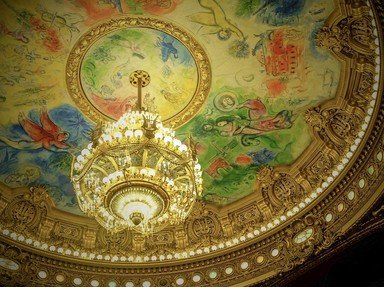Quiz Answer Key and Fun Facts
1. The Morgans, the Roosevelts and the Vanderbilts were among the families who founded the Metropolitan Opera in New York City in 1880. But there was already a house in town; the Academy of Music. Why did these upper-crust families feel the need for a new operatic venue?
2. The Metropolitan Opera opened its doors on October 22, 1883 and even before they opened, there was an argument. The first opera performed was Gounod's 'Faust'. Italo Campanini sang the title role and Christine Nilsson sang Marguerite and the language the opera was sung in was the basis of the wrangle. What language was it eventually sung in on opening night?
3. A year after the Metropolitan Opera first opened its doors it was already moving out beyond the confines of New York. The management decided to bring the entire season on tour to another city, beginning a long association. What was the Met's 'second city'?
4. The 1892-1893 season of the Metropolitan Opera had to be cancelled for a reason unfortunate but common in theaters of the time. What?
5. In 1900 Lionel Mapleson, librarian at the Metropolitan Opera, bought himself a new toy. It was such a lot of fun that he decided to take it to work and do something extra neat with it. His colleagues thought that he wasn't firing on all cylinders, but he made opera history. What did he do?
6. Cosima Wagner went so far as to sue the Metropolitan Opera to stop its 1903 production of her husband's opera. What was she so upset about anyway? It wasn't like it was the Holy Grail or anything. What was the opera in question?
7. In 1907 an open rehearsal of a new opera presented the Metropolitan Opera audience with '...a radical modernism packed with directionless dissonance and a riot of screaming and tingling new sounds'. Critics reported that 'many faces were white almost as those at the rail of a ship'. It was banned at the Met until 1934. Johann Strauss Jr. it wasn't. What was it?
8. On March 18, 1910 a one-act opera premiered at the Metropolitan. Riccardo Martin sang Iolan, Louise Homer portrayed Naola and the conductor was Alfred Hertz. The patriotic 'New York Times' critic was as kind as possible, calling it nice but boring. What was special about this opera?
9. She was a fine actress, but it was after her marriage that she really made her name. She became the first woman on the Board of Directors of the Metropolitan Opera Association and the founder of the Opera Guild in 1935. She had a lot of horse sense and she knew the stakes were high. Who was she?
10. The Metropolitan Opera Saturday afternoon broadcast is the longest-running classical music show in the world. Its 'Opera Quiz' is the longest-running quiz show. And a gold star for you if you can tell me who the sponsor was for 63 years!
11. Eleanor Steber, Robert Merrill and Regina Resnick must have sung ethereally to have all won the Metropolitan Opera's 'Auditions of the .... what?
12. It's always sticky when there's a war on. From 1917 to 1919 no German was heard on stage at the Metropolitan Opera. That's understandable. But how did the company handle 1942-1945?
13. Sometimes a night at the Met really means a knight at the Met. Who was the flamboyant and controversial general manager of the Metropolitan Opera from 1950 right up to 1972?
14. For an opera singer, 'tessitura' means optimum vocal range. At the Metropolitan Opera 'Tessitura' also means something quite different. What does 'Tessitura' stand for?
15. This divine man conducted more performances at the Metropolitan Opera than anyone else ever did. What's his name?
Source: Author
annaheldfan
This quiz was reviewed by FunTrivia editor
ertrum before going online.
Any errors found in FunTrivia content are routinely corrected through our feedback system.
